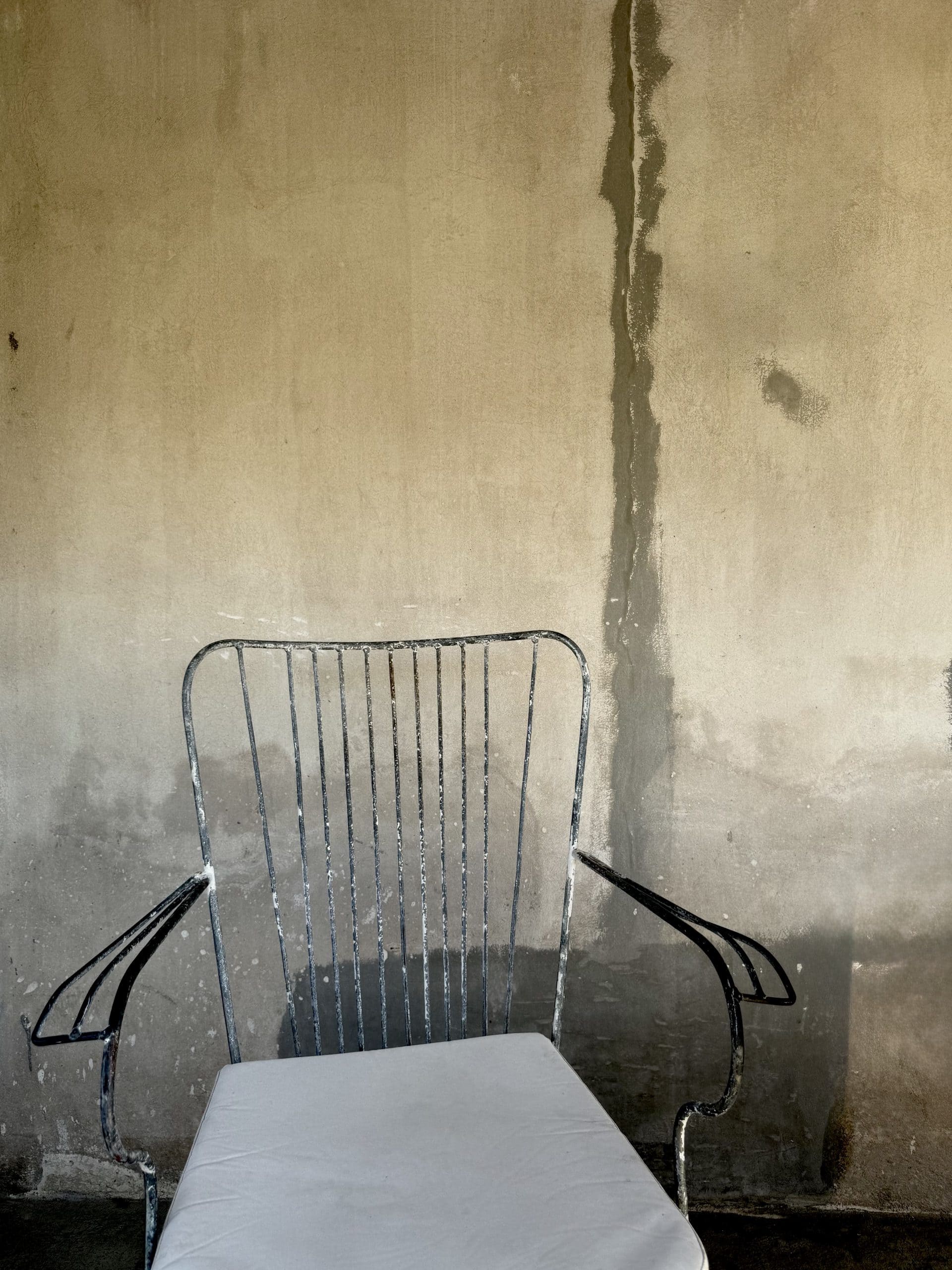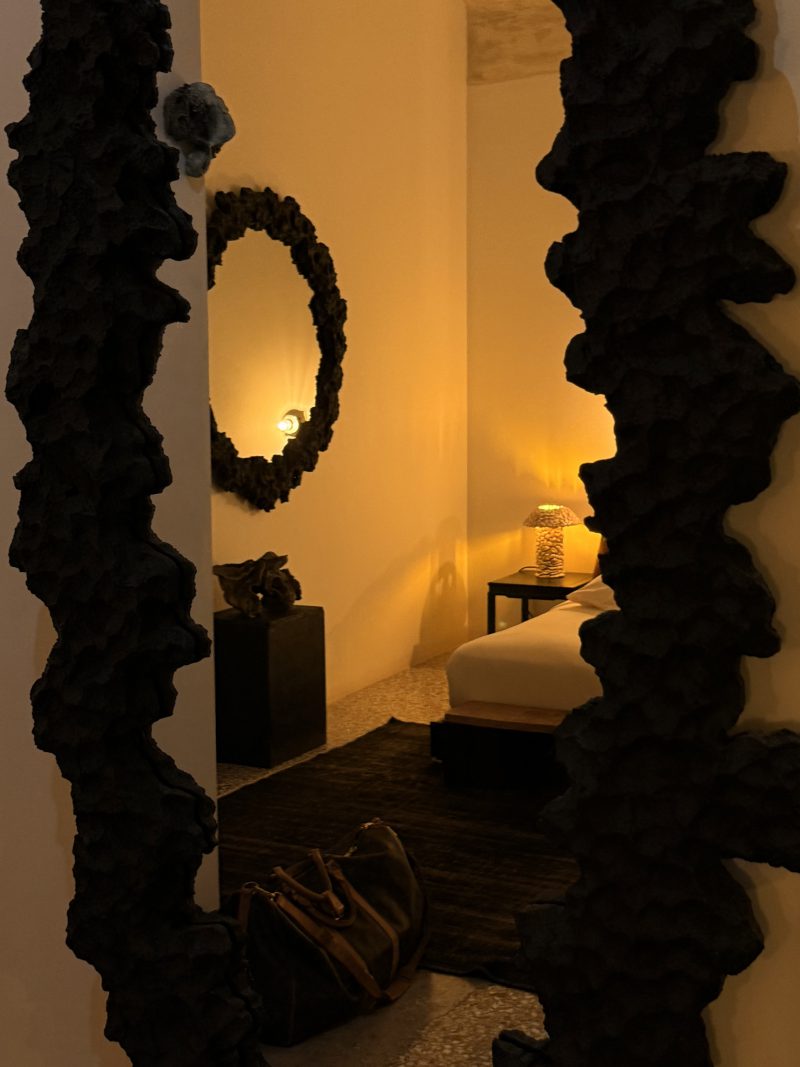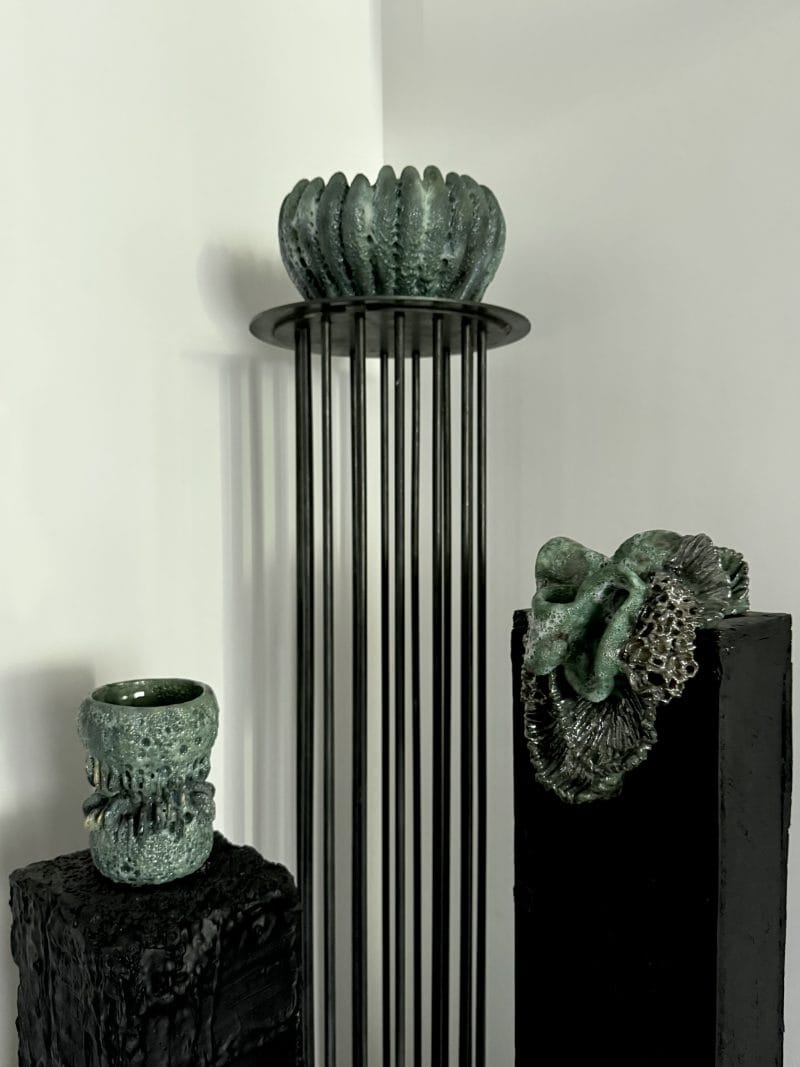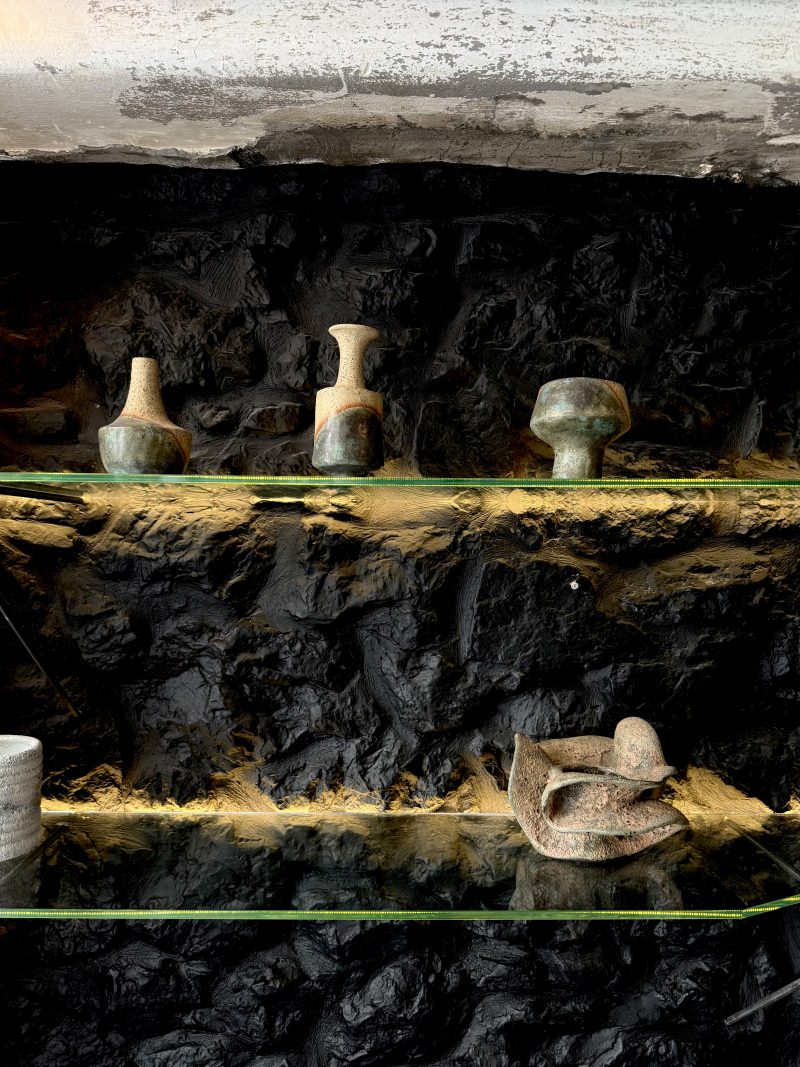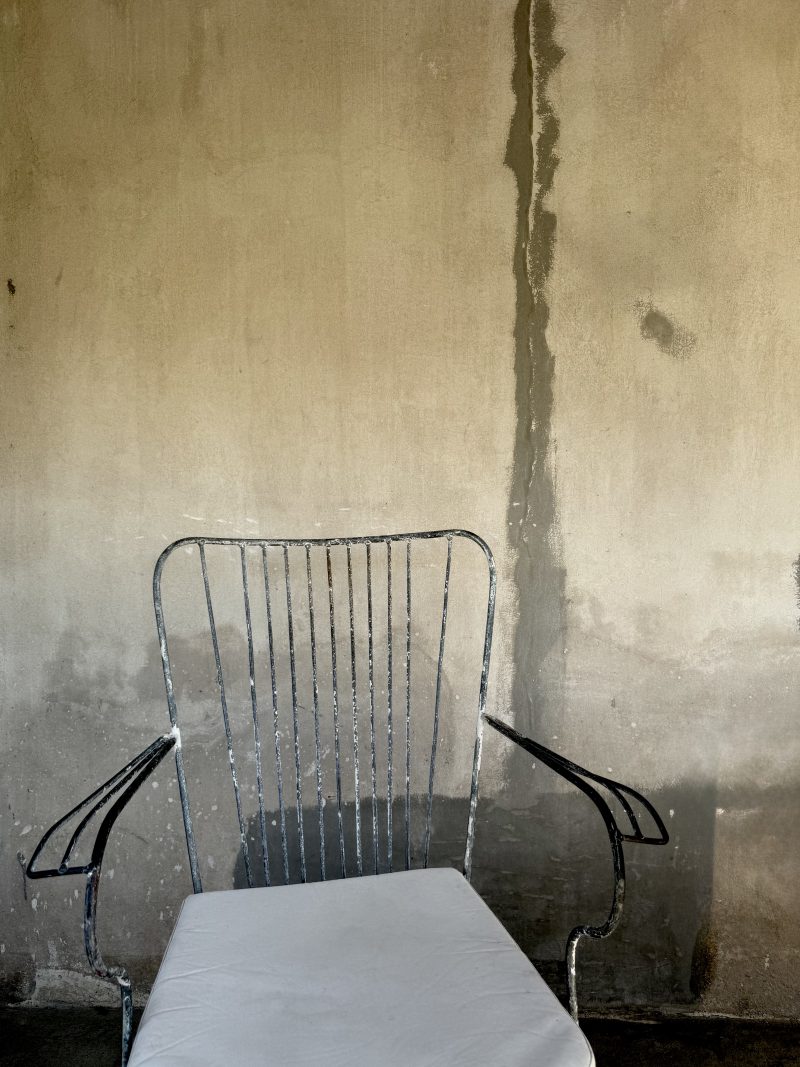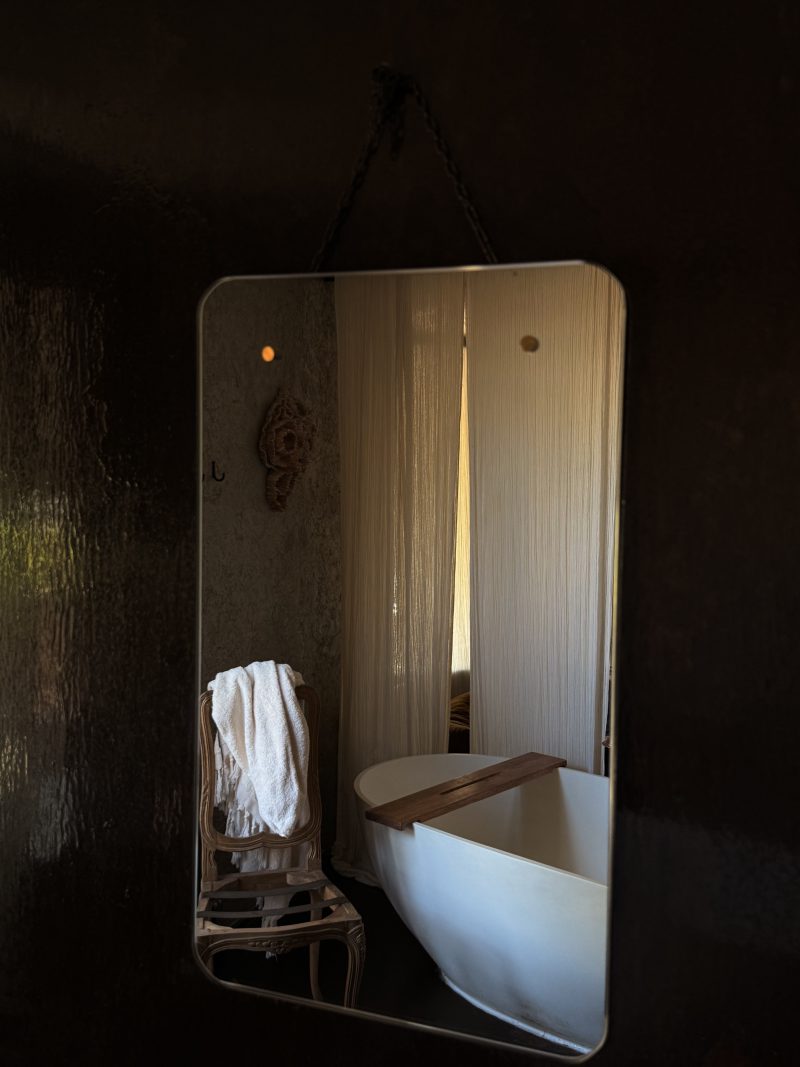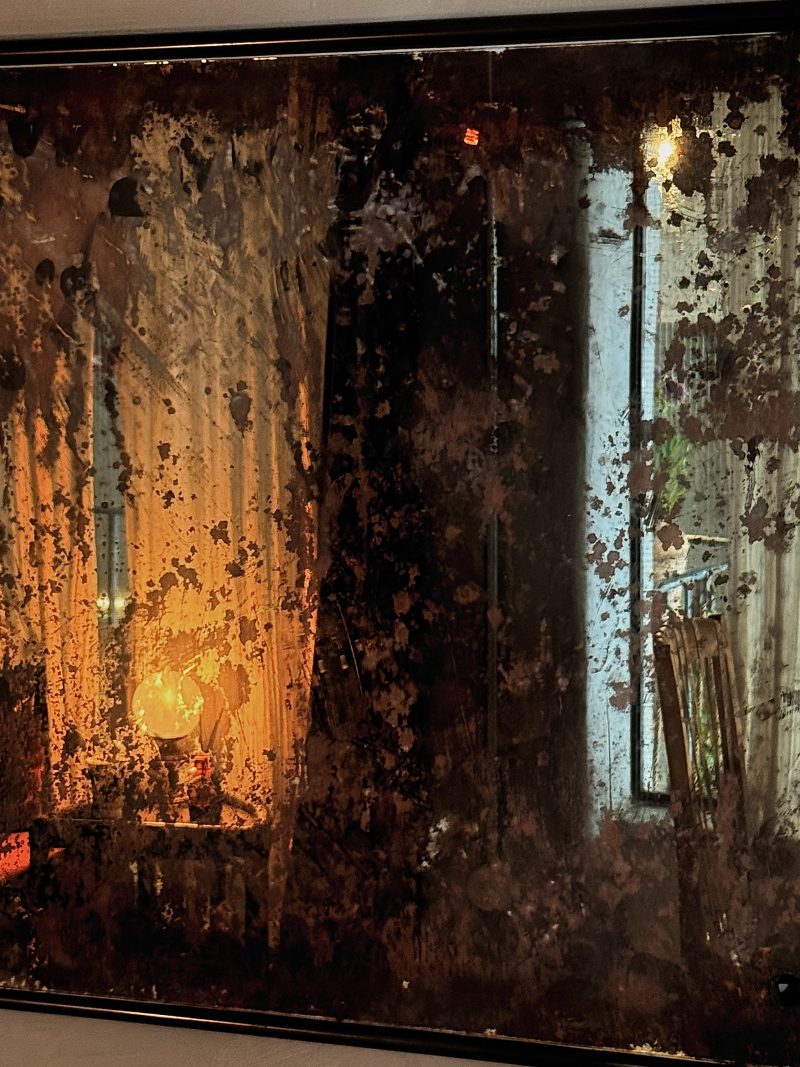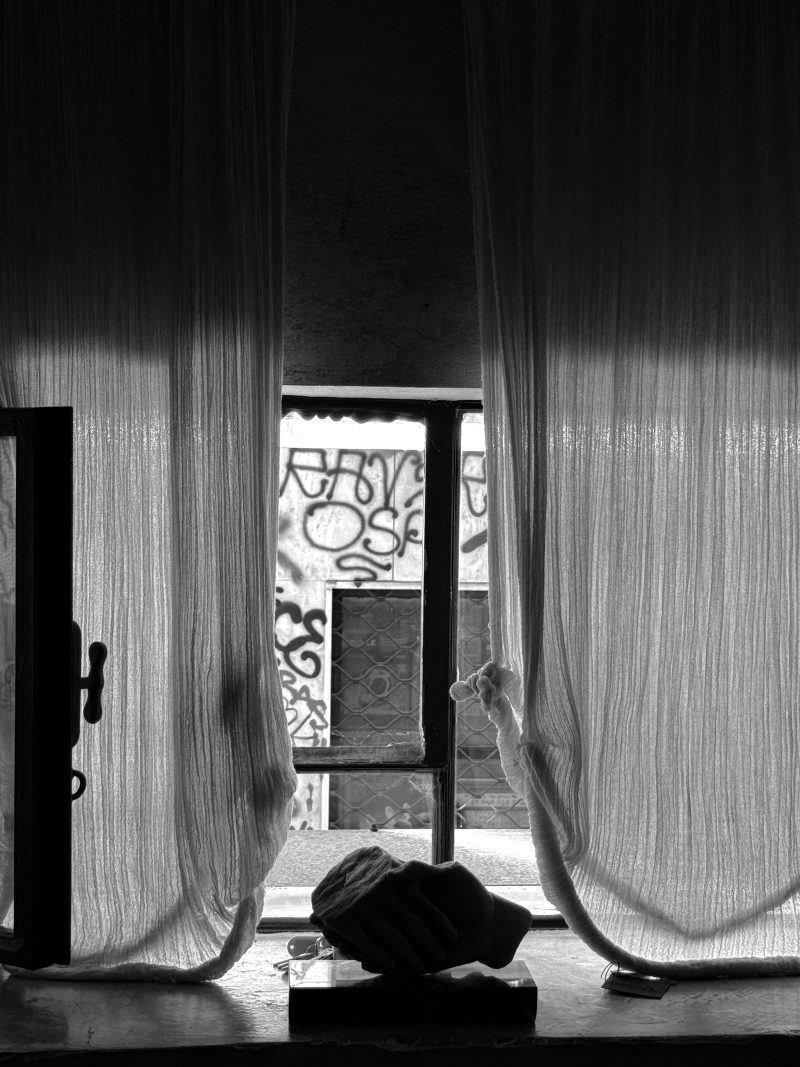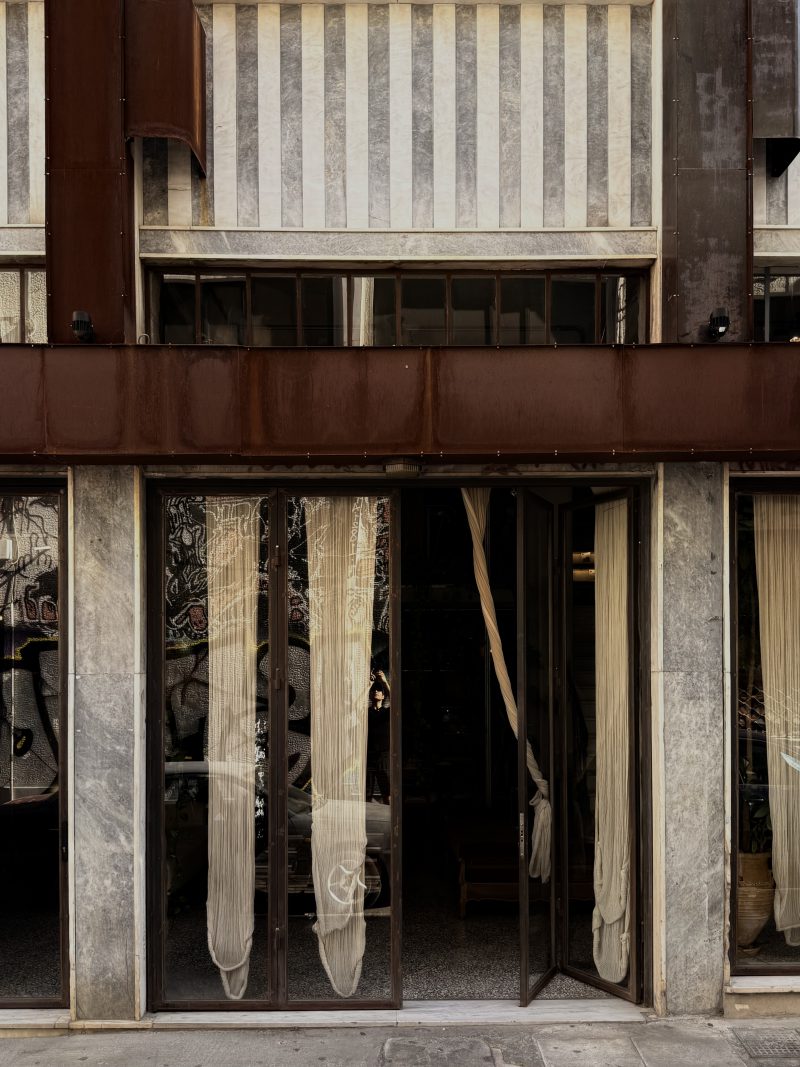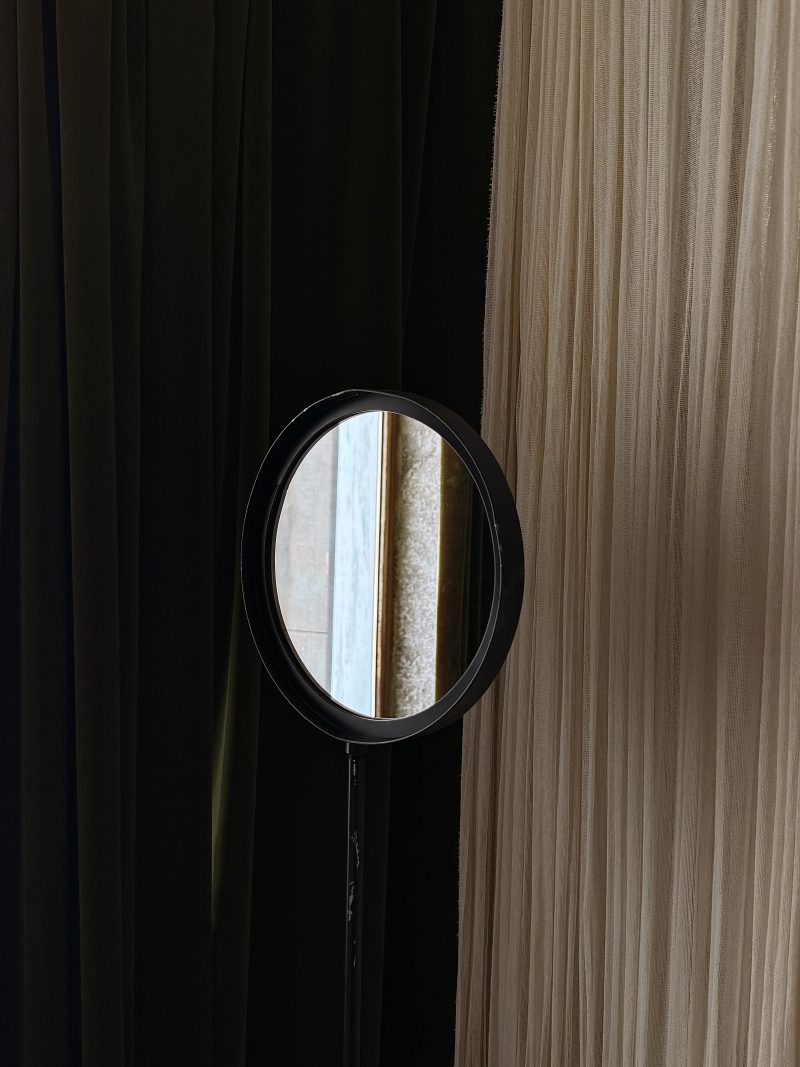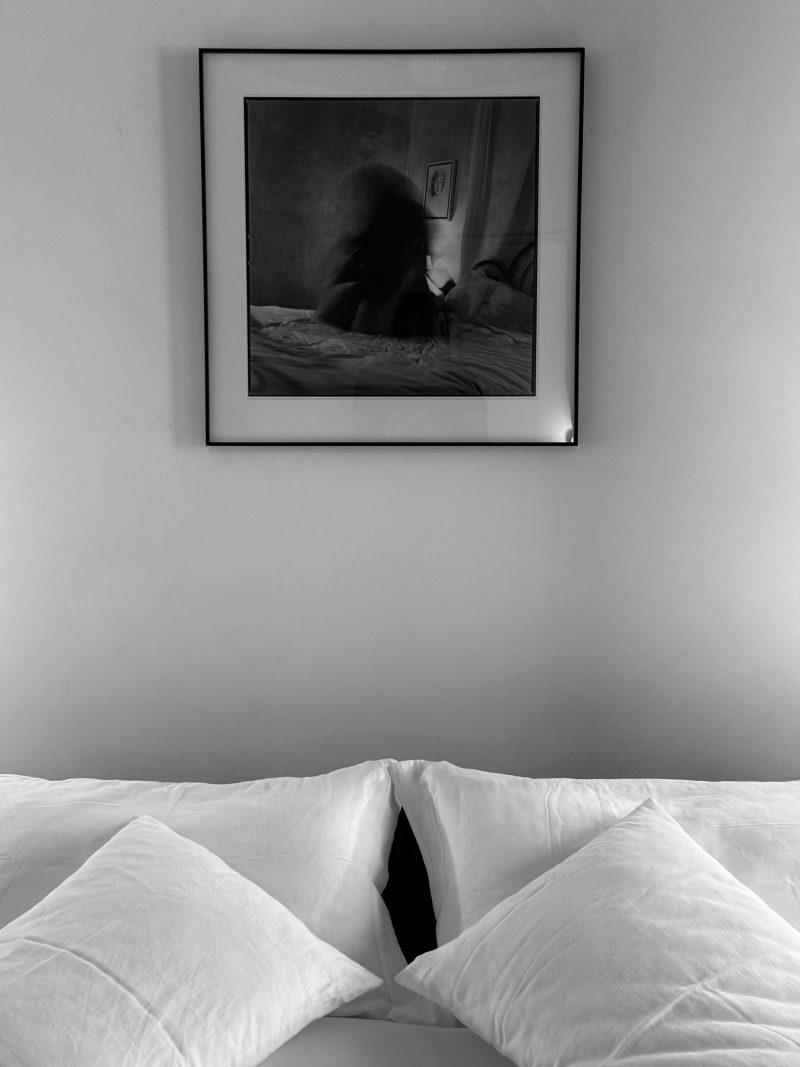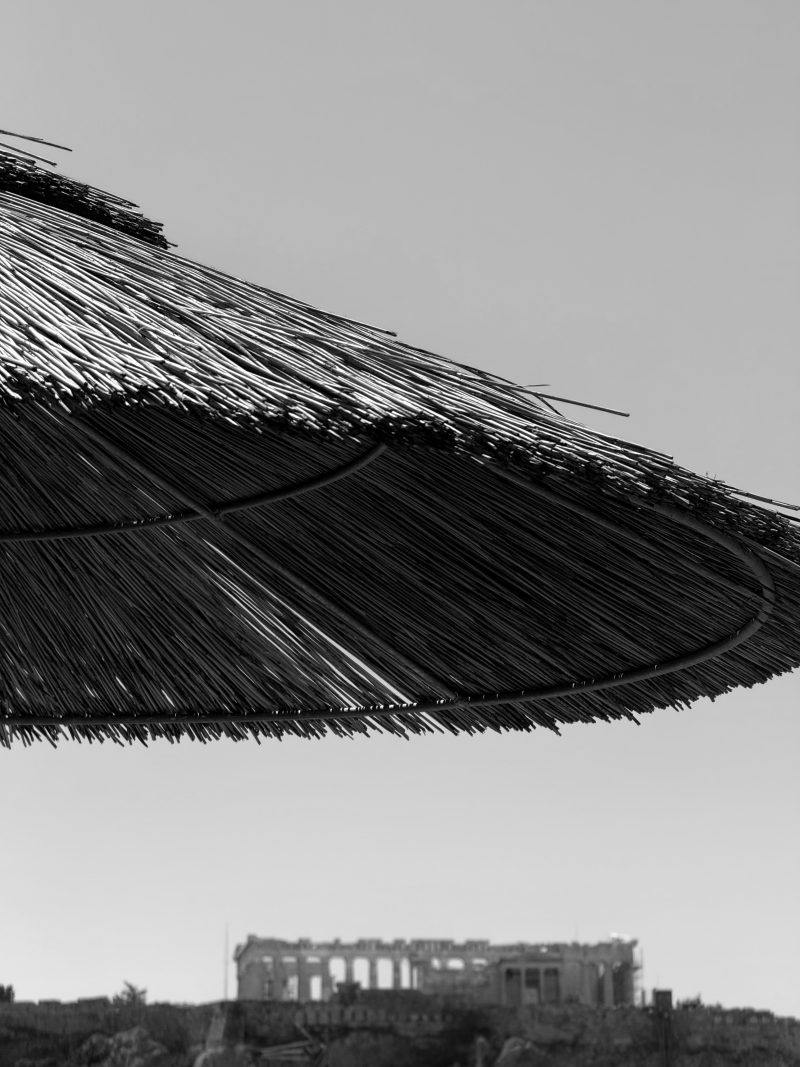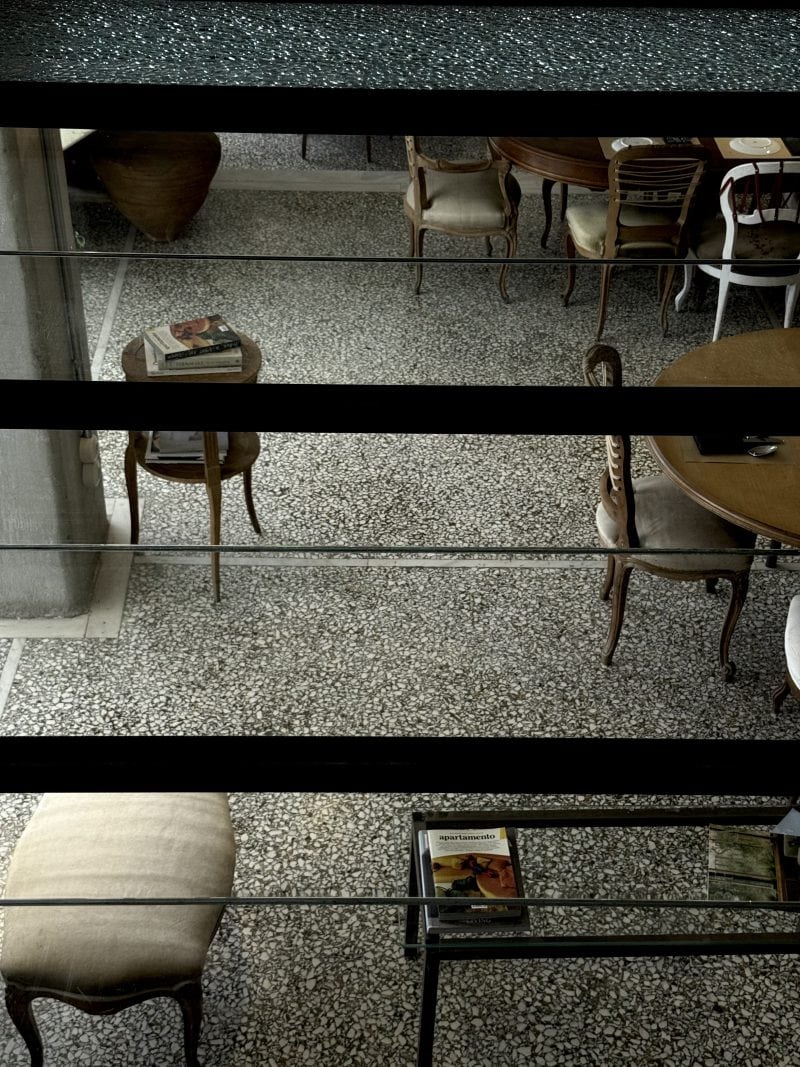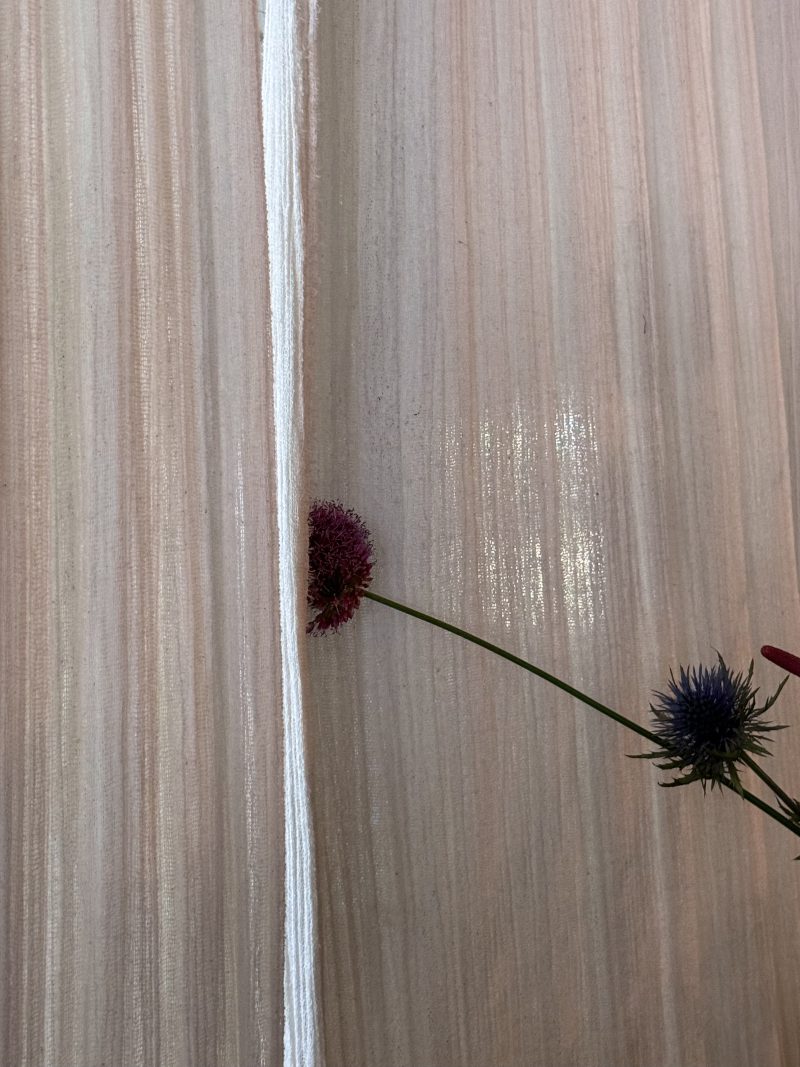There’s a kind of quiet that settles over Athens just before dusk: a soft gold suspended in the air, as if the city were holding its breath. At MONA, a 1950s industrial building reborn as a hotel in the heart of Psyrri, that stillness feels both deliberate and cinematic. You arrive through a discreet doorway, greeted not by opulence but by intent: a sense that everything here, from the linen curtains to the light fixtures, has been chosen for a reason.
Inside, the city falls away. The rooms — part atelier, part apartment — unfold like a series of well-considered photographs. Textures lead the way: the weight of the cotton bedding, the handwoven throws, the sheer drape of curtains that filter the Athenian light just enough to soften its edges. There’s a clarity in the materials, a transparency in their origin and touch, that makes the space feel honest. Nothing shouts for attention, and yet everything holds it.
Throughout the property, artworks punctuate the walls and corners like pauses in conversation. You might find a sculpture balanced on a ledge, a photograph leaning casually against a wall, or a painting that feels more like a presence than decoration. There are no plaques or artist statements, only the quiet confidence of pieces that seem to belong here — works that turn the rooms into meditative spaces, in dialogue with the people who pass through them.
The building’s staircase is its spine, a sculptural swirl of concrete and shadow that threads the hotel together. Guests drift up and down its curves, often stopping midway to take in the view from a window or the geometry of the stairwell itself. It’s not just a means of ascent; it’s the building’s heartbeat — an architectural gesture that holds the rest of MONA in rhythm.
The design language here is fluent in contrast. Vintage furniture sits effortlessly beside sleek, modern interventions. A mid-century armchair finds its counterpart in a marble-topped desk, while dried flowers — arranged with almost architectural precision — bring a sense of still life to the interiors. Nothing feels staged, but everything feels composed. It’s a place that rewards attention, a space that reveals itself slowly, as though it knows that true beauty rarely arrives all at once.
Come morning, the rooftop terrace feels like a secret revealed. From here, the Acropolis rises in full view. Less a monument than a neighbor, steady and golden in the first light. Breakfast is served family-style, a spread of just-baked breads, ripe fruit, and local yogurt. Everything is prepared fresh each morning, a small ritual of renewal that underscores the hotel’s rhythm of care. There’s a freshness not only in the food but in the way it’s served — quietly, without fuss, as if you were being welcomed into someone’s home.
By evening, the mood shifts. The rooftop becomes a gathering place, its bar glowing softly under strings of light. Locals mix with travelers, conversations slip between Greek, English, and laughter. The air smells faintly of citrus and smoke; the music is low, the drinks strong. What began as a hotel has evolved into something more like a salon: an address where art, conversation, and nightfall converge.
MONA’s charm lies in its restraint. It’s not a hotel that tries to impress but one that invites you to look closer. Every object, every surface, carries the fingerprint of a curator’s eye and a maker’s hand. In a city known for its ruins and relics, this feels like a different kind of monument — one built not to endure, but to be experienced.
To stay at MONA is to participate in a work in progress, a living composition of light, texture, and time. And as you step back onto the streets of Athens, you realize that the city, too, feels subtly altered — more photogenic, more tactile, more alive.
